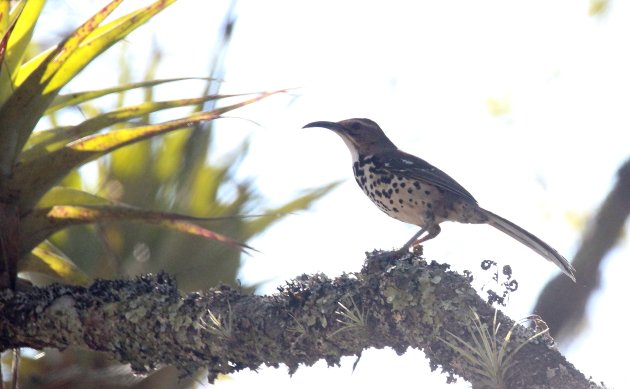
I confess, this post has a trick title. I actually have two eyes that both function perfectly well, when corrected for near-sightedness. But there is an old quote I always carry with me when I bird: “In the kingdom of the blind, the one-eyed man is king” (Desiderius Erasmus).
I am, you see, only a mediocre birder. I never get up before 6 a.m., and I never bird on an empty stomach. I rarely bird more than an hour from my home, because my wife expects me back by 2 p.m. so we can spend the rest of our day off together. I don’t own a blind or a tripod. My photos are just to help with IDs, and the good ones are always the product of dumb luck. I am not very good at learning to ID birds by song or call.
But my home is not in the U.S. or the U.K.; it is in Michoacán , in the southwest of Mexico. My first year on eBird, 2012, exactly 20 people submitted checklists for the entire state. By 2013, I was the #1 eBirder there — out of a total fo 24! I stayed solidly in first place until this year, when some welcome competition finally turned up. I’m happy to say, last year 98 people submitted checklists here, and it looks like 2019 will be the year we finally pass the 100 mark. All of which makes me a true one-eyed king.
(It is a fascinating footnote to this subject that the #3 eBirder of all time for the state of Michoacán is still a biologist named Chester C. Lamb, who surveyed the birds of western Mexico from 1932-1955, and whose lists have been posted on eBird in recent years. He worked back when you could still have a reasonable hope of seeing the now-probably-extinct Imperial Woodpecker, which he did, five times, though never in Michoacán.)
Now I know, true and noble birders are not supposed to care about such crass concerns as their ranking. And I don’t… much. But this is the truly exciting thing about being a one-eyed birder: When working in severely under-birded territory, even a mediocre birder like me can make significant discoveries. In my brief time birding Michoacán, I believe I can claim at least four such events:
1st Northern Parula in Michoacán
The year was 2013, and I was just rediscovering a passion for birds after a 30-year hiatus. I was barely getting to know my own neighborhood’s birds, which mostly meant exploring the nature reserve a few blocks from my home (los Filtros Viejos, which I described in a previous post). I happened to have a simple digital camera with me, without a telephoto lens; which is how I caught this sad little image of the first Northern Parula in Michoacán. This year there was a second sighting for the state, a bit further north.
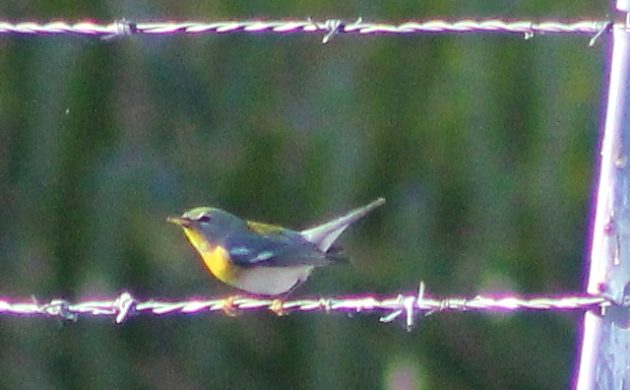
1st Sinaloa Martin for Michoacán
It was July of 2015, and I had been looking for a way to get as low and as high as possible within my one-hour-birding radius. The lowest option turned out to be the tiny town of Paso Ancho, at an altitude of “only” 3,300 feet. (I also presented this site and species in my first two posts on 10,000 Birds.) Summer here means rain, and the rainy season means lots of Swallows and Swifts. Swallows being hard to ID on the wing, I started taking as many photos as possible, in the hopes of something usable. Most were Barn Swallows. But when I got home, I discovered that several clearly showed an extraordinary species, the Sinaloa Martin:
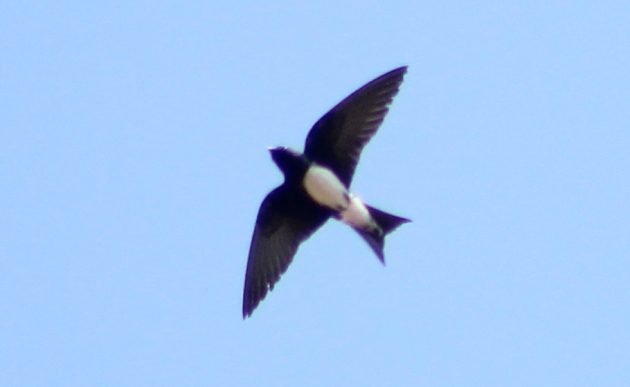
The Sinaloa Martin had only been known previously from the more westerly Mexican states of Sinaloa, Nayarit, Jalisco, and Colima. As I mentioned in my previous post, to this day no one knows where the species spends the winter. Even in its traditional range, it has only been reported 108 times; while I have seen it 4 times in Paso Ancho. A full one-third of eBird’s 9 photos posted are mine. One-eyed birding wins again!
1st Hudsonian Godwits in central Mexico
Hudsonian Godwits are among the few extraordinary birds that fly from the Arctic almost to the Antarctic every year. They breed in northernmost Canada and Alaska, and winter in Patagonia in southernmost South America. Traditional knowledge said they migrate south over the open water of the Atlantic, and return north over the coasts of the Caribbean and Gulf of Mexico.
Now, this is perhaps my most extreme example of one-eyed birding… In May of 2018, I went up to Lake Cuitzeo to see what might be there after the migratory season had ended. (At least, that is what I thought!) I saw a group of six medium-large, long-billed shorebirds feeding in several inches of water. At the time, I assumed they were the most obvious possibility for the site, Long-billed Dowitchers. I did not even pay attention to their slightly upswept bills, or I would have thought they were examples of the more exotic, but still possible, Marbled Godwit. Fortunately, I took pictures and posted them, with my incorrect ID, on eBird. And even more fortunately, Mexico’s birder extraordinaire, Amy McAndrews, happened to look at those photos, and noticed the barring and reddish coloration of the birds’ flanks. And that, my friends, is a perfect example of how a thoroughly mediocre birder can make a scientifically significant discovery in underbirded areas!
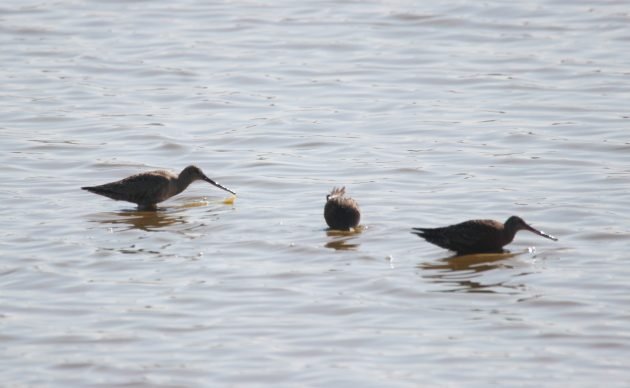
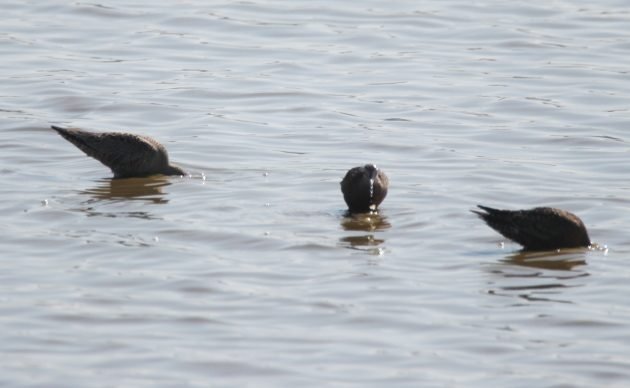 Yes, those are Hudsonians!
Yes, those are Hudsonians!
1st Ocellated Thrasher in Michoacán
The Ocellated Thrasher is another of Mexico’s little-known species. To date, eBird has only 561 registries for the species. All but one are from six east-central states. The one exception is from March of this year, in el Temascal, Michoacán… and it is mine.
Once again, I thought I had seen a different species until I got home and worked over my (severely-overexposed) photos. That spotted breast and long bill — surely, this was our endemic, but rather common, Spotted Wren! But that wren would have been a new species for el Temascal, so I clicked away, never noticing my ISO setting was so high.
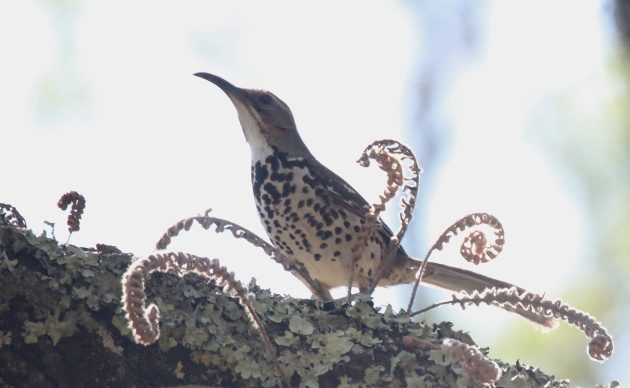
Since discovering this species at el Temascal, which at the time was a relatively new site for me, I have gone back several times hoping to confirm whether it is a resident there. So far, no luck… except that the search has allowed me to find Happy Wrens, Aztec Thrushes, a tiny Bumblebee Hummingbird, and my first Slaty Vireo there, as well as many other beautiful species. I guess that is a fair amount of luck for one site!
Can an average birder still make a significant birding discovery in the U.S. or Canada? No doubt it is a possibility. But if you want to turn that possibility into a probability, you might want to go someplace less-explored, and try one-eyed birding!













I never did make it there…and now I wish I had! Both the Sinaloa Martin, and the Ocellated Thrasher are such great birds! You never know, I might make it yet!
I hope you do some day!